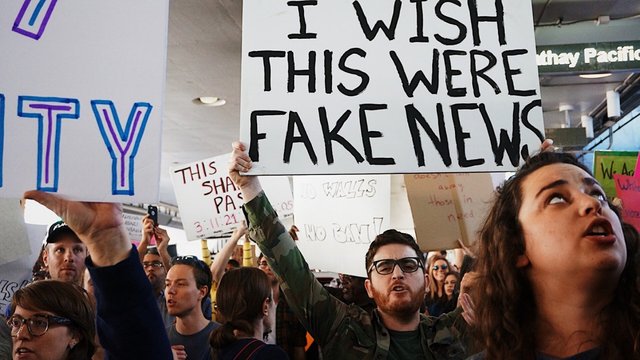Ancient Way of Beekeeping May Hold Answer to Bees Survival
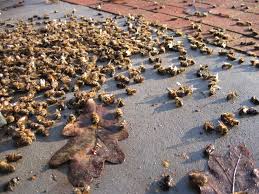
source Wikipedia
Unless you have missed the big news, honeybees in the US are struggling for survival. Conventional beekeepers in the US are reporting 40 - 62% losses each year. #honeybees
Honeybees are not the only pollinators in serious threat, native bees like bumble bees as well as lady bugs and butterflies are dropping in numbers as well.
U.S. Puts Bumblebee On The Endangered Species List For 1st Time
https://www.npr.org/sections/thetwo-way/2017/01/11/509337678/u-s-puts-first-bumblebee-on-the-endangered-species-list
Scientists, researches and fellow beekeepers are racing to find a solution before it is too late. #6thmassexstinction
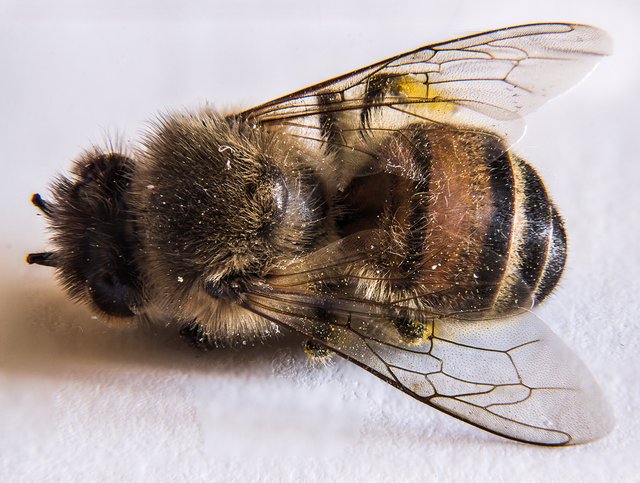
source: https://www.flickr.com/photos/pedroscreamerovsky/7065557391
75% of the foods humans depend on would not exist if it were not for pollinators like insects, birds and wild animals. With the impending threat of severe food shortage expected in the next 20 years, we need to protect pollinators as if our life depended on it. The very companies responsible for deadly pesticide loads in communities across the country say they are working to find a solution for this food shortage as well as replacing wild insects with robotic insects, at a cost ofcourse. https://www.cnbc.com/2014/10/15/world-may-not-have-enough-food-to-eat-by-2050-report.html
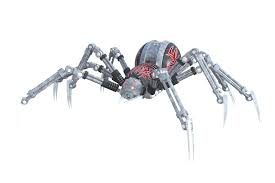
source: http://maxpixel.freegreatpicture.com/Robot-Artificial-Intelligence-Ai-Android-148989
Parts of China are already experiencing a total collapse with their pollinating insects and have to resort to hand pollination to grow crops. https://www.huffingtonpost.com/entry/humans-bees-china_us_570404b3e4b083f5c6092ba9
The top contributing factors thought to contribute in honeybee and pollinator decline over the past 10 years are:
Loss of wild habitat. #nature
Pesticides used by large farms and homeowners.
Climate Change.
Collony Collapse Disorder
Varroa Mite
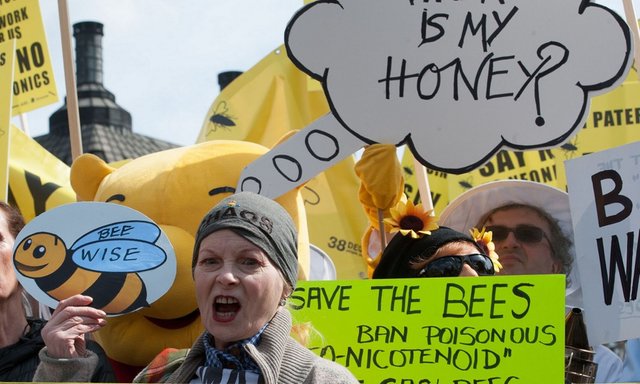
Poor, poor beekeepers? Maybe not so much.
The media share stories of how these seemingly mysterious diseases and outside sources are to blame for this catrastophe, but there is a darker side no one is sharing on the local news stations.
Most local beekeepers seek out local groups and clubs to learn how to keep bees. They sign up for classes at their local exstension office or school, trusting that the information they learn will include the latest on the science of keeping bees.
These local beekeeping clubs are most often funded by big chemical and agriculture corporations. Much like land grant universities in the US, where the curriculm tends to lean more towards using the corporations products and adopting their methodology for controlling pests, including honeybees.

Master gardeners who complete their studies are inundated with products and solutions that cause serious harm to pollinators as well as the local eco system without their knowledge or understanding.
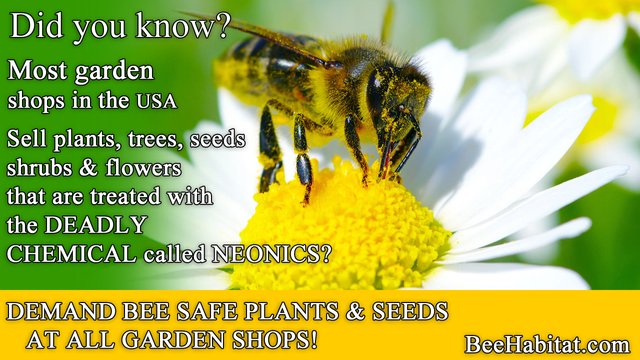
Top 3 Common Gardening Products that are highly toxic to bees, birds and your family
Synthetic fertilizers. Americans use trillions of pounds of synthetic fertilizers each year. Little do they know, that when these synthetic chemicals break down over time, they turn into the toxic inorganic arsenic. This arsenic is they taken up by the very plants they grow in their yards and communities, often used at home for dinner. https://www.consumerreports.org/cro/magazine/2012/11/arsenic-in-your-food/index.htm Plants and seeds that are not certified USDA organic or certified Biodynamic have been treated with a little unknown insecticide that lasts for years and years. you cannot wash off this pesticide. These Neonicotinoids have been blamed for unheard of lossess in colonies across the planet. Thousands of people protest each year to have this toxic and deadly pesticide removed from the market. Most garden shops treat thier plants with this long lasting pesticide and most consumers are unaware of the damage they are doing to thier local pollinators. Weed killers are immune suppressing chemicals that weakens not only the health of the plant or weed, but also of the insects that come into contact with the herbicide. These herbicides also affect the health of children, pets and the person who is applying this cancer causing chemical.

When Did All of this start?
Colony Collapse Disorder (CCD) was first report in the early 2000's by beekeepers who were noticing that either the hives were dissaappearing or that all of the bees were simply dead the next day. #deadbees
"It was like something out of a horror movie. All of the bees were gone, simply vanished from our bee yards. No bear damage, no vandelism...simply dissappeared." Katlin S. Beekeeper in Reno Nv.
Each year, since the addition of this class of pesticides called Neonicotinoids, pollinator populations have been declining at a startling rate.
When were neonicotinoids introduced?
In 1985, Bayer patented imidacloprid as the first commercial neonicotinoid. During the late 1990s, primarily, imidacloprid became widely used. Beginning in the early 2000s, two other neonicotinoids, clothianidin and thiamethoxam, entered the market. source https://en.wikipedia.org/wiki/Neonicotinoid
Colony Collapse Disorder (CCD) was first reported in 2006. Beekeepers began reporting high colony losses where the adult honeybees simply disappeared from the hives, almost all at the same time. There were few, if any, dead bees found in or around the hives.Jul 31, 2017 source: http://npic.orst.edu/envir/ccd.html
The latest US Environmental Protection Agency (EPA) information on US pesticide usage, from 2007, reports that over 1 billion tons of pesticides are used in the US every year. This is 22% of the estimated 5.2 billion pounds of pesticides used worldwide. Agricultural use accounted for 80% of pesticide use in the US.
https://ourworldindata.org/fertilizer-and-pesticides

source: https://romancingthebee.wordpress.com/2012/08/16/rudolf-steiner-and-the-bees/
Some say this problem began over 80 years ago.
In 1923, Rudolf Steiner, a scientist, philosopher & social innovator, predicted that in 80 to 100 years honeybee populations would collapse. His prediction has come true with Colony Collapse Disorder where bees are disappearing in mass numbers from their hives with no clear explanation. source http://www.queenofthesun.com/about/story/
Genetics plays a big role in this story. I'll explain a little more on this for you. We are finally getting to the good part, where the good guys save the world.
In nature, only the strongest, healthiest and smartest drones get to mate with the Queen. This mating ritual has helped this species thrive for millions of years without human "help". Each colony would pass down information in regards to their local ecology, weather and food sources through their genetic memory. Helping a hive to maintain balance and their well being to survive. The Queen Honeybee will carry billions and even trillions of sperm in her abdomen from many different suitors. This diversity ensures the strongest, smartest and healthiest bees are reproduced.
Fast forward to current times, with most bees, you can buy a pack of them, off of the internet to start your honey production business. Sadly though, these honeybees come from bees that were borne from a sadistic and cruel process. In the lab, the Queen is mated in a very sadistic, rape like scenario where the same drone bee is mated with all of the Queens who are held against their will by something close to a pair of robotic tweezers until the deed is done.
"It should be noted that instrumental insemination of queen bees is different from artificial insemination of other animals. Our goal is not to fertilize one egg with one sperm, but just to get millions of sperm stored into the queen's spermatheca." Evil bee rapist website source here: http://www.glenn-apiaries.com/apimondia_1.html
This horific bee breeding practice is responsible for millions of honeybees with poor genetics and weakened immune sytems.
With the loss of wild habitat, neonicotinoid laced flowers, trees, seeds and plants in many yards, parks and lands across the country as well as climate change, has proven to be a deadly combination for pollinators of all kinds. Weakened immune systems in bees attracts disease and parasites. This is the way nature works. If a plant, animal or insect is sick or weakened in health, bacteria and predatory insects find their way to these hives and perform a serious function on this planet, rid diseased insects from an area to prevent the spread of this epidemic to other species. This works with plants in our gardens as well. Whenever a plant is sick, it emits odors that attract insects to come and remove it from thier local eco system.
Honeybees are going exstinct not because of some mysterious cause, but because of human miss handling of the land and local eco systems. Conventional beekeepers (which count for 70% of the beekeepers on earth) practice a form of beekeeping that is responsible for the decimated populations that are left in the US.
Did you know that conventional beekeepers do the following to their own bee hives?Harvest all of the bees honey right before winter time to sell to market? This leaves the honeybees less than a few weeks to forage for natural pollen and nectar to build up reservers for the long winter. What do conventional beekeepers do to keep their bees alive? They feed their bees corn syrup for months on end. This is the equivalent of feeding your children sugary cerals for breakfast, lunch and dinner for 4 months out of the year.
When the bees become sick (after eating nothing but sugar for 4 months) these bees will start to attract predatory insects, parasites and diseases. This is a normal process in nature. The beekeepers then use antibiodics and even insecticides within the hive and on their bees to try and keep the bees alive long enough to make a few more bucks off of them.
These conventional beekeepers then pack up their dying bees and truck them across the country to parts of the US that have killed off all of their natural and native insects and honeybees. Yep, you guessed it. These honeybees are then forced to pollinate the thousands of acres of pesticide laced almond and fruit orchards.
A short list of the common extra ingredients you can find in your local honey. Source is from a treatment free beekeeper you can follow here: http://parkerbees.com/treatmentfree.html
Treatments include but are not limited to:
Apiguard (thymol)
Mite-away II (formic acid)
Apistan (fluvalinate)
Sucrocide (sucrose octanoate esters)
Mite-A-Thol (menthol)
Terramycin/Tetra-B (antibiotic)
Tylan (antibiotic)
Gardstar (permethrin)
Fumagilin (antibiotic)
Paramoth (p-dichlorobenzene)
Checkmite (coumaphos)
Oxalic Acid (dicarboxylic acid)
Formic Acid (carboxylic acid)
Mineral Oil (food grade mineral oil, FGMO)
Sugar Dusting (sucrose)
HBH (essential oils)
MegaBee (diet formula)
Honey Bee Healthy (feeding stimulant)
Bt Aizawai (bacteria)
Thymol (crystals, feed, or fogging)
Essential oils (in general)
Grease patties (Crisco etc.)

So as you can see, the honeybees never had a chance. They are barely living organisms treated as a hot commodity and replacable with the next order off of Amazon.com
As the years go buy, these bees are not as smart as their predecessors and are not equipped with the local knowledge of an area need to survive.

We now have actual Zombie Bees who have a form of dementia, caused by the systemic class of insecticides named Neonicotinoids. This parasitoid's genus Apocephalus is best known for the "decapitating flies" that attack a variety of ant species, though A. borealis attacks and alters the behavior of bees and wasps. These flies are colloquially known as zombie flies and the bees they infect are colloquially known as zombees. source: https://en.wikipedia.org/wiki/Apocephalus_borealis

source: https://pixabay.com/en/zombie-forest-seemed-gleise-643461/
How Bad Beekeepers Are Crying Wolf
The media interivews beekeepers for a local feel good story that is suppose to get the locals to support the beekeeper and feel sorry for them even. Local honey is not good for human consumption unless it is USDA Certified Organic or Demeter Certified Biodynamic honey.
Honey tests reveal global contamination by bee-harming pesticides
Neonicotinoid insecticides are found in 75% of global honey samples and half contain a cocktail of chemicals. https://www.theguardian.com/environment/2017/oct/05/honey-tests-reveal-global-contamination-by-bee-harming-pesticides
Skip failed to mention, he is taught by conventional beekeeping classes, workshops and online courses to use insecticides on his bees when they fall prey to parasites.
.jpg)
Honey in ancient times, was considered to be medicine for humans, now it is a toxic soup of pesticides, heavy metals, antibiotics and other chemicals picked up on the hairs of the worker bees who forage up to 3 to 5 square miles each day looking for pollen and nectar.
And yet, there are a growing group of beekeepers who through all of these mind boggling obstacles have re discovered an ancient practice of beekeeping that has allowed their honeybees to flourish.
Welcome to the wonderful world of Biodynamic Beekeeping.
"We see less than 5% lossess each year with our bees." Jacqueline Freeman Beekeeper.
How can these beekeepers work so well with nature and their honeybees under such demanding and intollerable living conditions?
Some useful beekeeping methods that have emerged from this group of Biodynamic beekeepers shed some light into whats going on here.
Biodynamic beekeepers harvest honey from the hive in Spring, giving the bees many months to recreate their food stores.
Biodynamic beekeepers are treatment free, meaning they never use sytnthetic chemicals and/or antibiodics on a hive.
These beekeepers also capture their own local hives via a natural process called swarming. This ensures that the honeybees are local and aclipmated to the local environment and are more often healthier for it.
Biodynamic beekeepers encourage natural mating methods via the Swarm season.
Biodynamic beekeeping is The Gold Standard in how to grow food and is the future of local, healthy eco systems.
Other types of beekeeping are showing promising signs of recovering from this horrific position we have found ourselves in thanks to the hands of greedy big ag and chemical companies.
Treatment free beekeeping does not allow the use of any treatments in the hive. If the hive is sick, the honey is probably not a safe bet to be used in food products.
Certified USDA organic beekeepers do not use conventional synthetic pesticides, but are allowed to treat their bees with 25B pesticides and other treatments as needed. All of which may not be healthy for the bees or for us either. On the plus side, in order for a honey producer to get her certification, her bee yards must be within a 10,000 acre area that is USDA certified organic. Why? Bees forage 2 - 5 square miles. This includes toxic convention farms that spray with cancer causing chemicals, golf courses who use toxic chemicals to keep that fake green all year as well as road departments that regularly treat the sides of roadways with toxic pesticides.
Natural beekeeping which includes doing as little as possible to disturb the hive. Learn more at http://parkerbees.com/treatmentfree.html
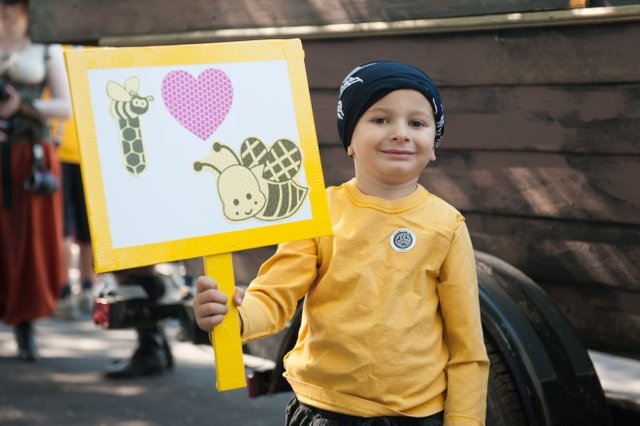
There is hope, but we all must do our part. I have compiled a quick list of items you can adopt in your daily activities that can dramatically increase the health of our wild pollinators.
Buy as much USDA certified organic foods as possible. Local farmers markets DO NOT COUNT unless they have the USDA certified organic seal on their food products.
Never buy seeds, bulbs and plants unless they have the USDA certified organic seal or the Biodynamic seal. Remember, that most seeds and plants are treated with bee killing pesticides that you cannot wash off.
Leave areas of your land wild with weeds, brush, branches and the like. Insects and wildlife need these unkempt areas to have a safe haven to raise their young.
DO NOT become a beekeeper if you live in the city. You are only going to lose all of your money invested. There are too many plants that are treated with toxic chemicals in a city. If you are called to become a beekeeper, then really put your back into it and become a Biodynamic beekeeper. Learn more here: https://www.biodynamics.com/webinars
***Remember, that honeybees forage 2 to 5 and even up to 7 miles if they have too. So, what you or your neighbor does to their land affects bees and other pollinators from many miles away. Wildlife do not understand 'No go zones', there are no fences in the natural world. We are all Beekeepers my friend.
Thank you for reading this post. I hope you will share it with others and keep this message moving forward. Of course I would love it if you could vote or share some love as well.
